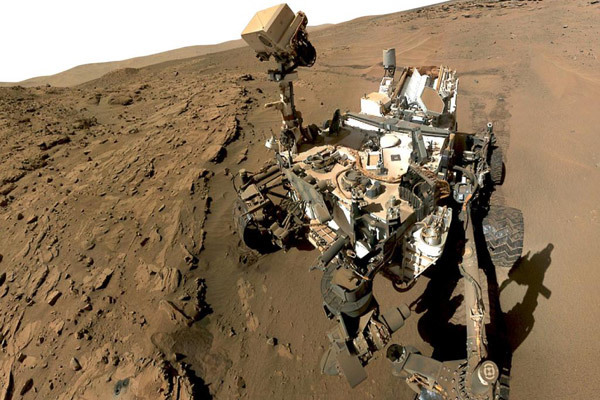- Geology, so Mars stopped resembling Earth
- NASA program: Explore Mars from the office
What would you think if they commissioned one of the most important scientific experiments in history, ended up with apparent success and then the results were discarded? This happened to NASA scientist Gilbert Levin, whose instruments detected in 1976 what appeared to be life on Mars. But the milestone went deflating ... until it was nothing.
Levin, principal investigator of the experiment to detect life in the Viking mission, is still convinced that there are not only microorganisms on the red planet , which would be compatible with everything we know about Mars today, but that his instruments already managed to detect them more than four decades
The positive results of the Viking life detector, called Labeled Release (LR), were discarded by NASA and the scientific community because they were inconclusive. However, Levin argues that there is no definitive explanation as to why the experiment yielded those results, so he continues to think that what he detected were really life traces.
"I am convinced that we found life on Mars," the scientist has titled a provocative opinion article published in the popular science magazine Scientific American , in which he regrets that NASA has not sent biological activity detectors back on its subsequent missions to the planet. . Levin criticizes that the next exploration vehicle, the ' Mars 2020 ', will not carry any instrument like the one used in the Viking program.
"On July 30, 1976, the LR sent its initial results from Mars. Surprisingly, they were positive," says Levin in his opinion, which CNN has echoed. " It seemed that we had answered the final question ."
NASA has made important discoveries in the last decades about the possibilities of life past and present on Mars. However, as Levin recalls, he has not re-conducted an experiment like his own, in which he attempts to directly detect the presence of live microorganisms.
"Inexplicably, in the 43 years since Viking, none of the subsequent vehicles on Mars have carried a life detection instrument to continue these exciting results," said Levin, whose analyzes were inspired by the "simplicity" of the pioneering findings. by Louis Pasteur in 1864.
Traces of metabolism
The LR instrument inoculated a solution with nutrients in Martian soil samples, in order to check if some type of microscopic life consumed the 'food' and left a trace of metabolic activity. Interestingly, the sensors did record activity, although the subsequent scientific consensus pointed out that it came from another class of chemical reactions, in which life was not involved.
But Levin, like his colleague in the LR, Patricia Ann Straat, has always argued that the most consistent explanation with the data remains the presence of microorganisms. "What is the proof against the possibility of life on Mars? The amazing fact is that there is none," says the scientist in his article.
A statement that, regardless of the interpretation made of the results of the Viking, could be signed today by any NASA expert. Not surprisingly, the Mars2020 mission, which will take off in July next year, has the stated objective "to answer key questions about the potential for life on Mars ."
According to the criteria of The Trust Project
Know more- science
- Science and Health
Climate crisis Roadmap to reduce CO2 emissions by half in 2030
Climate crisis Greta Thunberg's speech at the Climate Summit: "They have stolen my dreams and my childhood!"
Science Fall 2019 starts today, September 23, but ... How long does it last? When is the time change?

